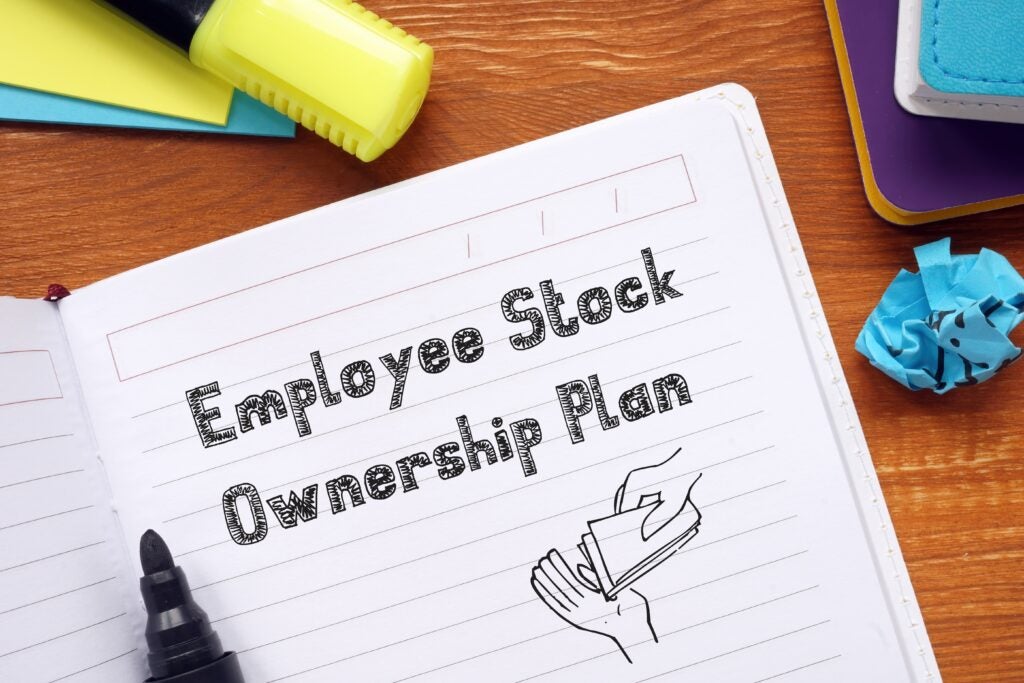
Every business owner knows that a committed and talented workforce is more important than anything else in a company. Their high productivity, determination, proactive support, and commitment to quality work are all incredibly crucial no matter how big or small the company is.
That’s precisely why every employer must offer employee benefits packages as a form of incentive to ensure that employees remain committed, and employee share option plans or employee stock ownership plans (ESOPs) are perhaps among the best ones out there.
What Are Employee Stock Ownership Plans?
An ESOP is a benefit plan that allows employees to obtain shares from the company. They can purchase it directly, receive it as a bonus, or obtain it from a profit-sharing plan. If the company performs well, its shares or stocks would naturally increase in price. Since employees have their share of those stocks, they would also benefit from this development. Employees included in the ESOP would then be interested in how well company stocks are doing, which may ultimately encourage them to do their best for the company. Basically, it’s a win-win for both sides most of the time.
Not only is it an excellent way to motivate your existing employees, but it can also help you attract prospective talents. But as you might’ve already guessed, not every ESOP is an attractive deal to employees and candidates. If you intend to create a plan that benefits all parties, doing so half-heartedly won’t do the trick. On that note, here are seven tips for creating an employee share option plan:
-
Offer The Plan Aggressively In The Early Stages Of A Startup
When you first establish your startup, your assets are generally less liquid, meaning it’s not as easy to provide remuneration to your employees. Hence, any remuneration packages you offer may not seem as attractive as those from companies that have already been operating for a long time.
For that reason, you have to take things up a notch, and you can do so by increasing the amount offered in the ESOP. The policies should also be less strict so as to not discourage prospective talents from working in the company.
-
Focus On The Outperforming Employees
When creating a remuneration package for employees, you have to consider all of them, but that’s not to say you can’t focus on a specific group. This applies to when you’re creating an ESOP plan. Since your outperforming employees are essentially the key to growing your business, you must match their expectations through your remuneration packages. Not only does it allow you to prevent the possibility of them leaving your enterprise, but it also encourages them to perform better.
-
Communicate With Your Employees
When creating an ESOP, you have to be open about it to your employees. They must be aware of your plan and know its specifics, especially if there are only a handful of people working in the company. In short, keep it completely transparent.
You should also prepare to respond to their feedback and provide them with realistic values. For instance, you can ask what their preferred rate would be for the ESOP. Of course, this would only apply if your employees come up with reasonable suggestions.
-
Work With An ESOP Counsel
Like with any other employee benefit plan, when creating an ESOP, you have to comply with applicable laws and legislation. Since compliance may vary according to the structure of the remuneration package, it’s best to work with an ESOP expert or counsel when creating the plan.
A lawyer or counsel should be able to identify any discrepancies in the plan’s documentation and deal with any legal issues. They can also help you modify or add clauses to your plan documents according to your preferred structure. Hence, it’s generally a good idea to work with an ESOP counsel.
-
Encourage Equity Over Equality
While you may be tempted to provide the same benefit to all your employees, it’s generally not a good idea. Instead, you must value equity over equality, that is, to recognize that each individual has put in different levels of trust and effort, and you must reward them as such. Simply put, you have to make sure employees that were with you since the founding of the company enjoys better benefits than those who joined your company at a later time.
For example, if the value of each share costs USD$2, then your first employees can purchase them for that amount. Further down the line, this price may increase as the company grows. Suppose the price rose to USD$4. Instead of allowing your employees to purchase it for the original value, which is USD$2, they must pay the current price instead. This ensures that employees that have been with you the longest make the most out of the remuneration package, although new employees would still benefit from the plan.
-
Hold A Discussion Or Meeting Regarding The Plan
An ESOP can be a bit complex, and not many people understand how it truly works until you explain it to them personally. That’s why if you intend to create an ESOP, it’s best if you first explain it to your employees by sitting down with them for a one-on-one discussion or holding a meeting. Of course, if you’re not good at explaining things, you can instead rely on your treasurer or your counsel to explain the specifics to the employees. By doing this, they’re less likely to underestimate the potential earnings from the ESOP, which should further improve their motivation.
-
Customize The ESOP Pool Size
As stated earlier, not all ESOPs are designed in the same way. Some have high rates, while others have a relatively low rate. A high rate is typically for startups, while companies operating for a long time have a low rate.
Apart from the company’s life span, you must also customize your ESOP pool size according to your requirements. Depending on your current budget, you can either create an ESOP that makes up 10% of the company or 20%. Either way, you shouldn’t look at one company and copy their design. Make sure your plan is suitable not only for your enterprise but also for your employees.
Conclusion
Remuneration packages like ESOPs are a win-win for a company and its employees, but that doesn’t mean you can create one without putting much thought into it. You need to consider things such as its pool size and the legalities surrounding it. If you mess up on either one of those factors, you might not achieve your goal. In the worst-case scenario, you may even get the opposite of your intended outcome. However, with these tips, you should be able to create a reasonable and realistic ESOP for your employees.
Author: Keira is a Human Resources expert. She has been in the industry for more than nine years. Keira shares her expertise by writing guest posts online. During her free time, she loves reading books, bake desserts, and spend time with her family.
1988 Views













